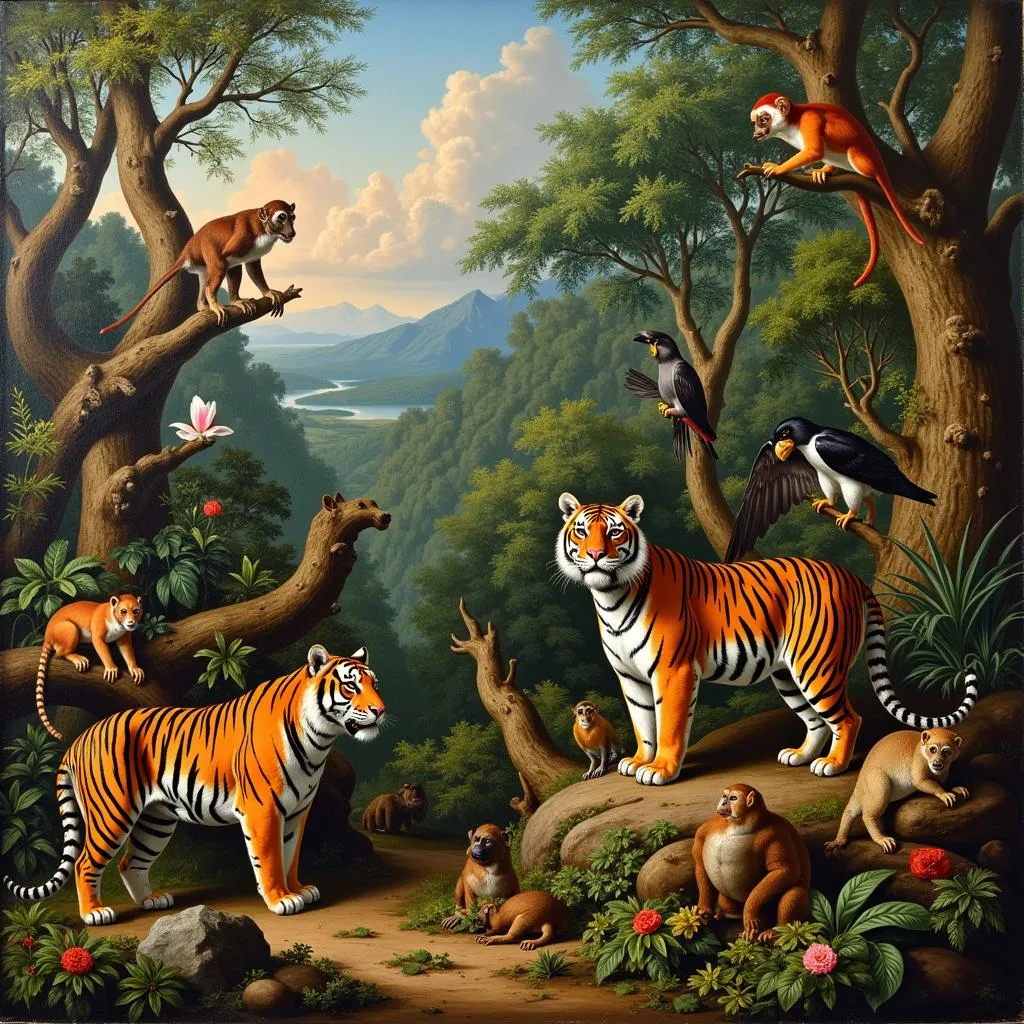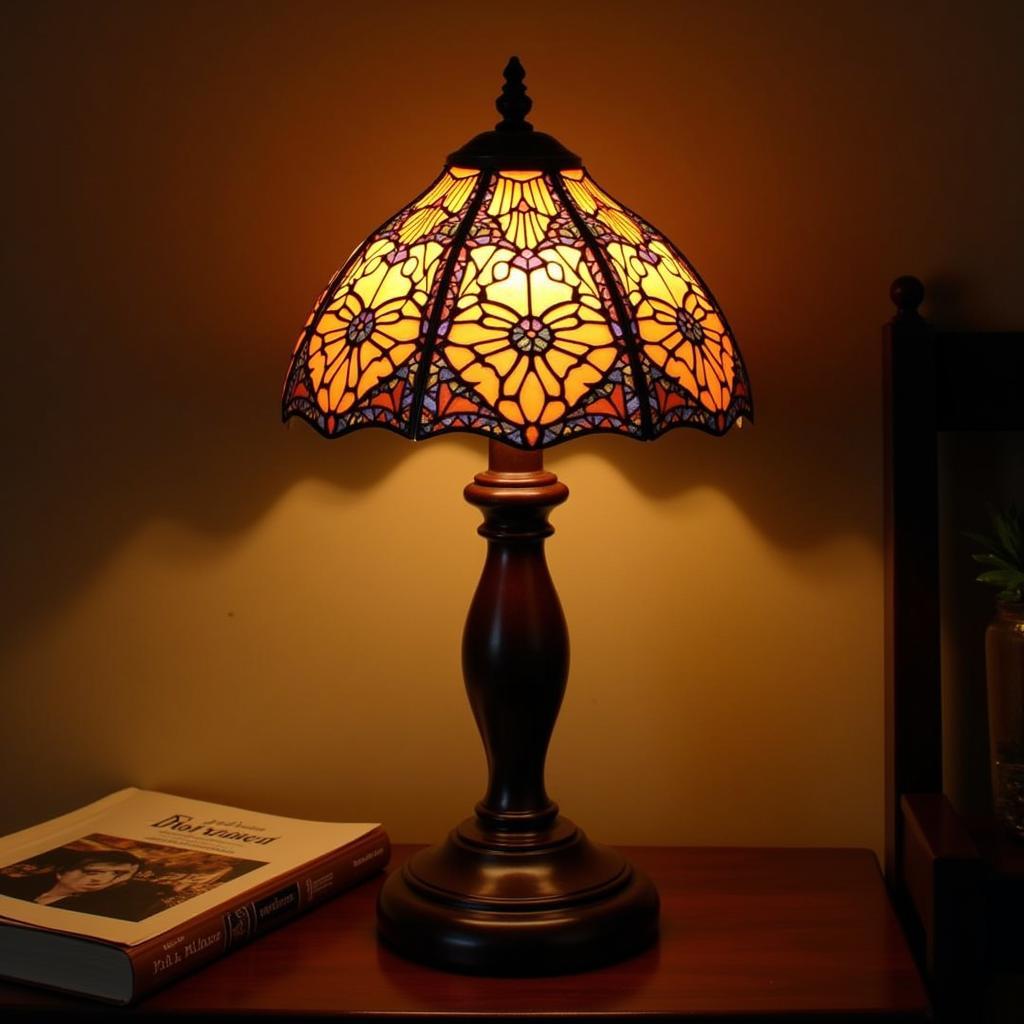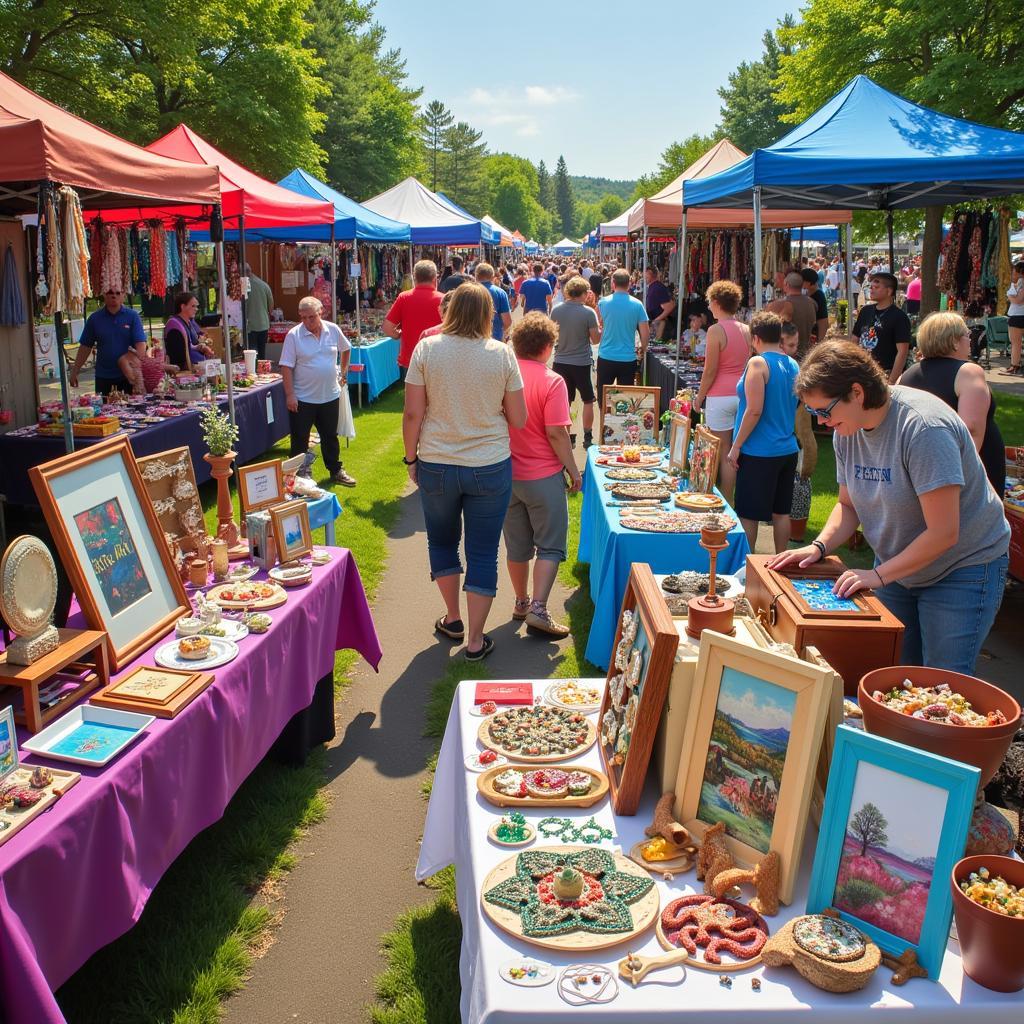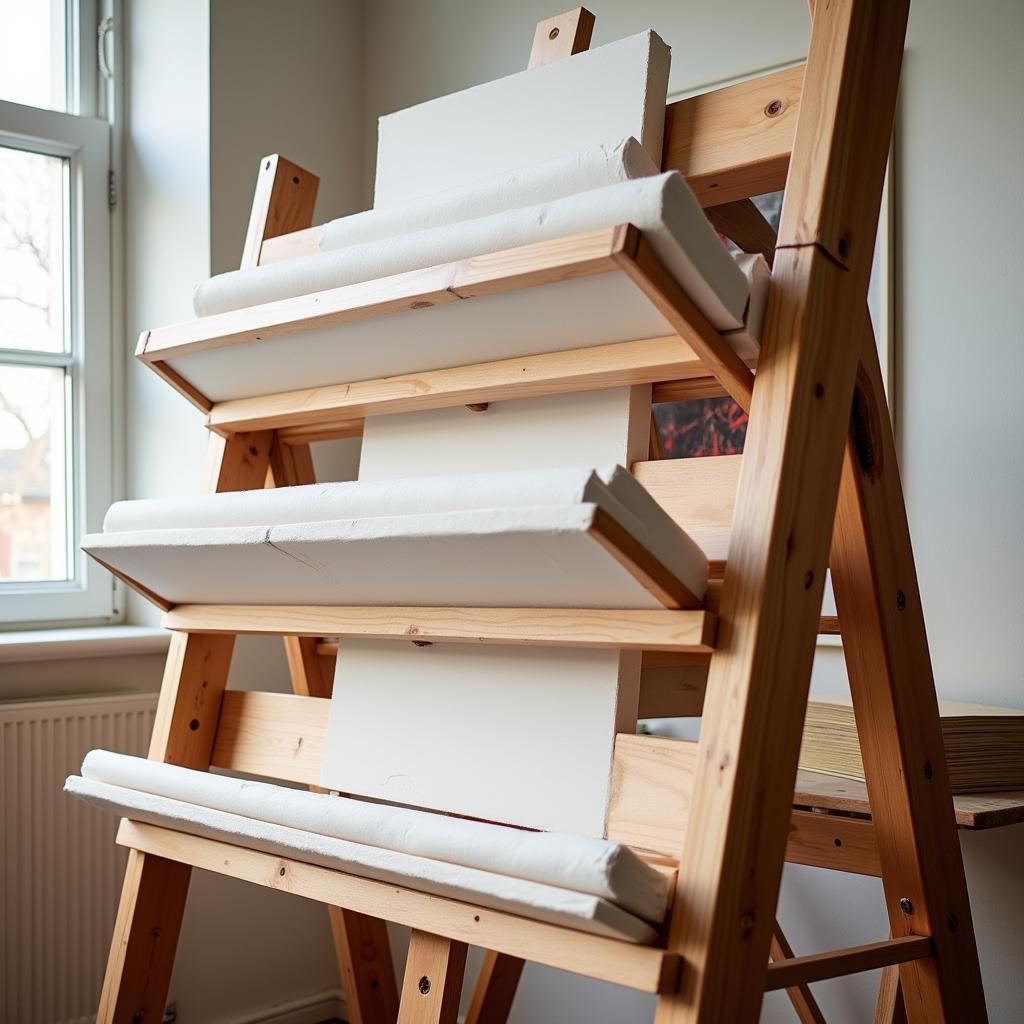British Colonial Wall Art: A Journey Through Time and Style
British Colonial Wall Art instantly transports us to a bygone era, a fusion of European grandeur and the exotic allure of distant lands. From intricate botanical prints to majestic landscape paintings, this captivating art form reflects the cultural exchange and complex history of the British Empire.
Unveiling the Allure of British Colonial Wall Art
 British Colonial Style Painting Featuring Tropical Animals
British Colonial Style Painting Featuring Tropical Animals
British colonial wall art emerged during the 18th and 19th centuries, capturing the spirit of exploration and discovery that defined the era. Artists documented newly discovered flora and fauna, creating stunning botanical illustrations and wildlife paintings. These artworks served not only as decorative pieces but also as valuable scientific records of the natural world.
Key Characteristics and Influences
 Colonial Landscape Painting with Indian Architecture
Colonial Landscape Painting with Indian Architecture
Several key characteristics define British colonial wall art. Firstly, the influence of European artistic traditions is undeniable, with styles like Romanticism and Realism playing a significant role. Secondly, the art often depicts scenes from colonized lands, showcasing the architecture, landscapes, and people of these regions.
The use of natural materials like wood and canvas was prevalent, reflecting the resources available in the colonies. Color palettes often featured earthy tones, alongside vibrant hues inspired by the exotic flora and fauna.
Popular Themes and Motifs
Beyond botanical and wildlife illustrations, British colonial wall art explored a diverse range of themes.
- Landscapes: Vast landscapes depicting tea plantations in India, bustling harbor scenes in Hong Kong, or dramatic mountain ranges in Africa were popular subjects.
- Portraits: Portraits of colonial officials, their families, and indigenous people offered a glimpse into the social hierarchy and cultural dynamics of the time.
- Historical Events: Some artworks depicted significant historical events, such as battles, treaties, or ceremonies, providing visual documentation of key moments in colonial history.
Collecting and Displaying British Colonial Wall Art
 A Collection of British Colonial Botanical Prints Displayed on a Bookshelf
A Collection of British Colonial Botanical Prints Displayed on a Bookshelf
Today, British colonial wall art is highly sought after by collectors and interior designers alike. Original pieces can be found in antique shops, auction houses, and online galleries. When choosing pieces, consider the artwork’s condition, provenance (its history of ownership), and your own personal aesthetic.
Displaying British colonial wall art effectively can enhance your home décor. Consider grouping pieces together to create a gallery wall, or using a single statement piece to anchor a room. Natural wood frames complement the colonial aesthetic beautifully.
British colonial wall art serves as a captivating window into a complex and fascinating past. By understanding its historical context, artistic influences, and enduring appeal, we can appreciate these artworks not just as decorative objects, but as tangible links to a bygone era.




